A line is the strongest visual element of design. But that doesn't mean it has to be a straight line. Diagonal, arcing and even S-shape lines are powerful ways to move the eye through a landscape.
Lines signal to the viewer, "Look here. Move here. Follow me."
As I mentioned in my last post, the idea of using classic principles and elements of design as a landscaping tool has appealed to me since I first learned them in a university course. I studied textile design, but the amazing thing is that design is design, regardless of the medium. Once you know these universal guidelines, they will inform and inspire how you create, plant, furnish — and organize your landscape.
On to line as an element of garden design. I believe the human eye is trained to see lines in nature — in trees, in the horizon, in the outline of a mountain range. When we intentionally design with linear forms (curved or straight), they can be a useful device for energizing a space and giving it order.
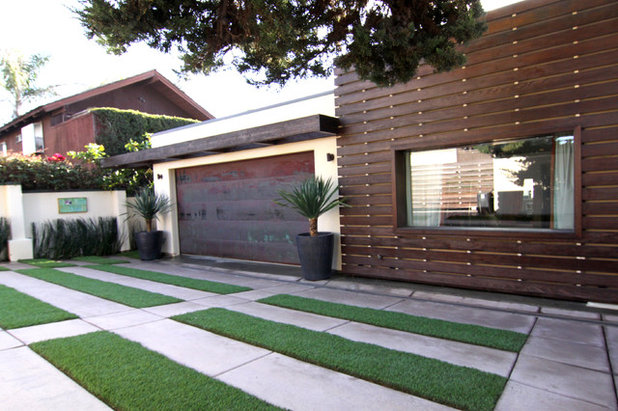
Flea Market Sunday
This driveway-courtyard has two things going for it: line and rhythm. Bands of poured-in-place concrete alternate with similar-size bands of turf. You have to admit, this is way more exciting than an ordinary concrete driveway. The design transforms what would otherwise be a utilitarian driveway into a delightful, graphic auto court. The horizontal lines of the architecture play nicely with this treatment. And using bands of grass is a great way to make your driveway permeable.
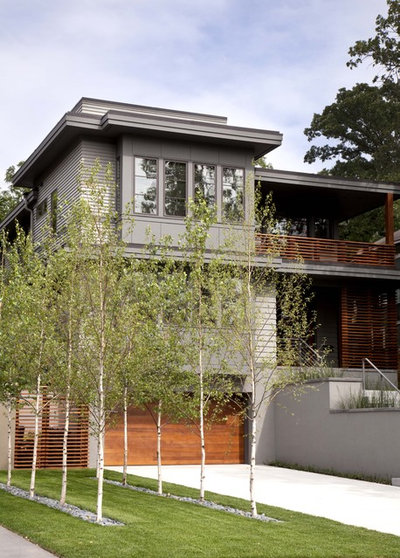
Andrea Swan - Swan Architecture
Lines can certainly be conveyed by our planting choices. I love this contemporary use of two rows of white-bark trees (probably river birch or Aspen). This modern-day allée is formed by two parallel rows of trees. Notice how both rows have been planted in a linear strip of gravel within the lawn — a reinforcement of the line motif. This front lawn will look great even in the winter, when the tree branches are bare.
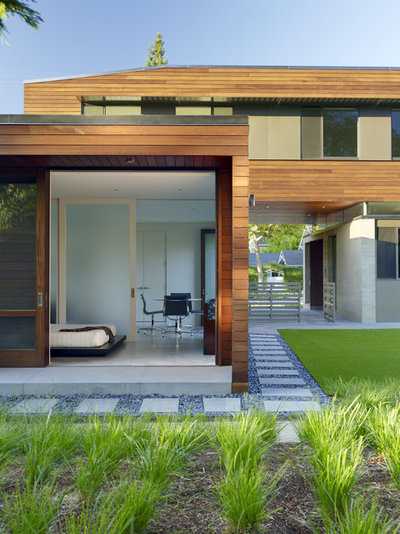
The lines between interior and exterior spaces are blurred in this wonderful residence, thanks to the sliding glass doors that open a bedroom suite to the garden. I like the strong line that defines the home's perimeter, reinforced by a wraparound path that stitches architecture to vegetation.
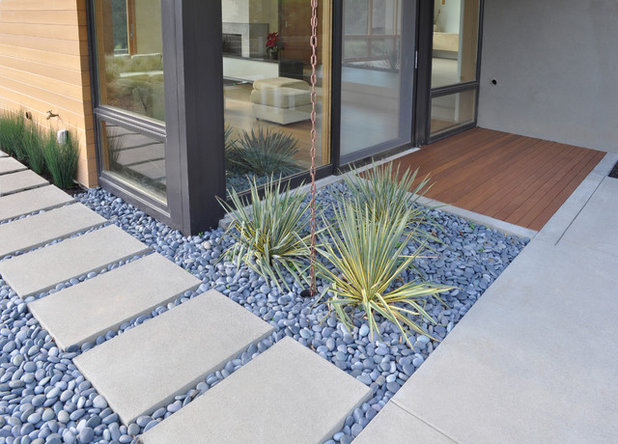
Huettl Landscape Architecture
Here's a closeup of the same type of path treatment, in which a powerful line is formed by evenly spaced stepping stones installed in a gravel bed. The bold path frames the home and also moves the eye through the landscape to the deck beyond.
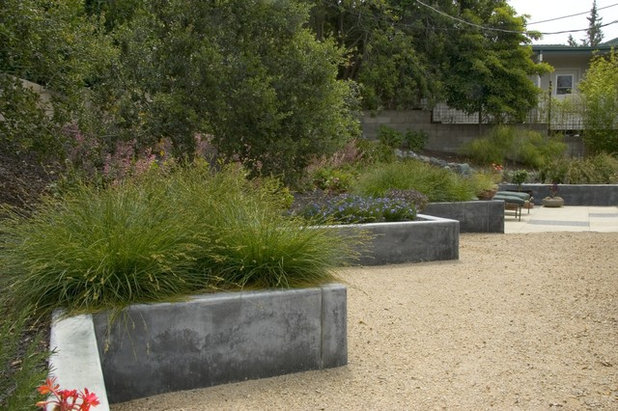
Jeffrey Gordon Smith Landscape Architecture
Why use a straight line when you can make it zigzag? I love these stair-step raised planters that create a dynamic edge to this gravel garden. The zigs and zags of the retaining wall are more than functional — they're an important design ingredient. Moreover, this approach creates bonus planting space that a straight retaining wall wouldn't offer.
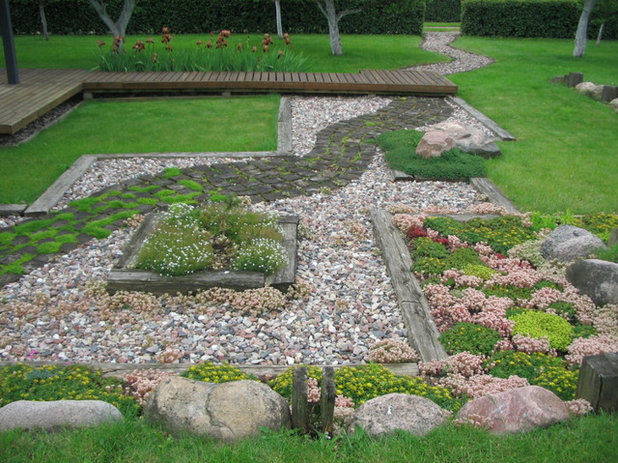
gytis
There's a lot going on in this gorgeous rock garden, but the eye knows exactly where to look, thanks to the strong diagonal line of gravel and ground covers that moves through the otherwise square and rectangular spaces. It is arresting rather than interrupting — and its presence makes the rest of the planting areas look well balanced and complete.
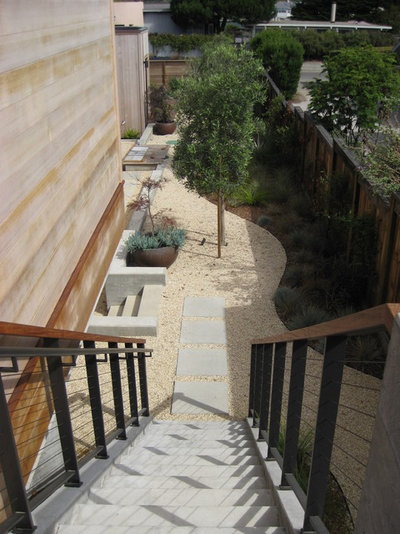
This narrow side garden has a lot of linear elements. First there's a straight set of steps with vertical side railings that descend to a straight pathway at the base. Then there are the exterior lines of the architecture to the left and the fence to the right. Nice, right? But thank goodness there's one gentler line here. The extended curve of the planting bed gives this design the softness it needs in the presence of the other hard-to-ignore lines and angles.
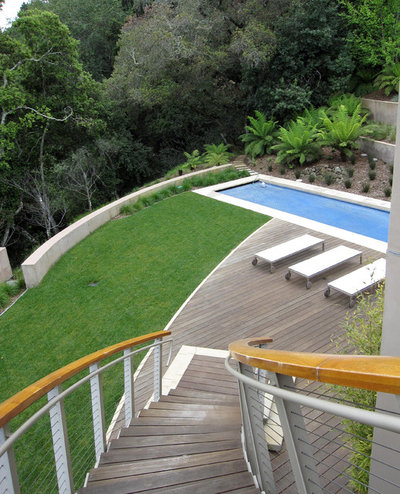
Shades Of Green Landscape Architecture
Arcs make a huge statement in this lovely backyard. Notice how dominant they are and how much interest they add as a counterpoint to the rectangular swimming pool and chaises. This treatment works because multiple arcs are carried through the design. From the railings and the staircase to the shape of the deck, the deck's edging, the lawn and the retaining wall at the far edge, there's a hierarchy to the arc.
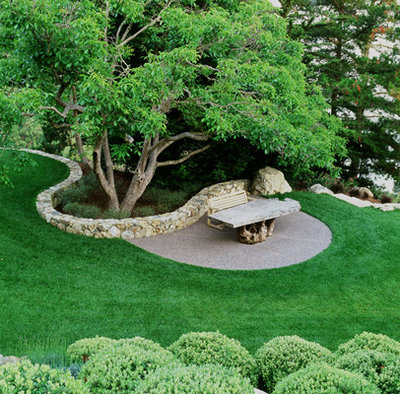
Blasen Landscape Architecture
Lines convey an organic message in this serene, almost Asian-style garden. The stone wall threads in and around the specimen tree in such a lovely, graceful way. Instead of being a purely functional retaining wall, it adds an artful note to the garden. There's no denying that the eye wants to follow that line and see where it goes beyond the frame of this photograph.
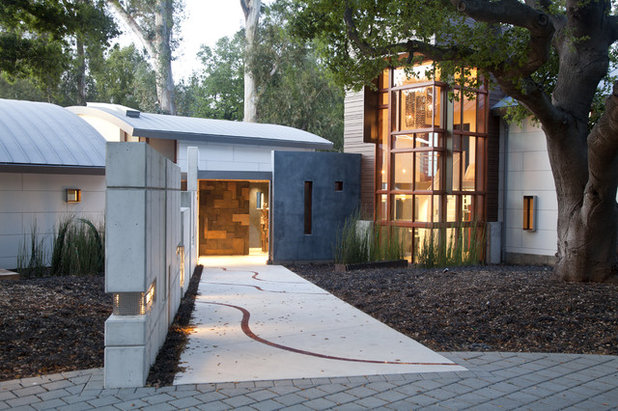
WA Design Architects
Simple, simple, simple. Adding a few squiggles in this wide entry walk was a stroke of brilliance. They resemble ripples moving across the water's surface. These quiet, curved accents are quite effective as a contrast to the mostly noncurved lines of the house, wall and walkway.
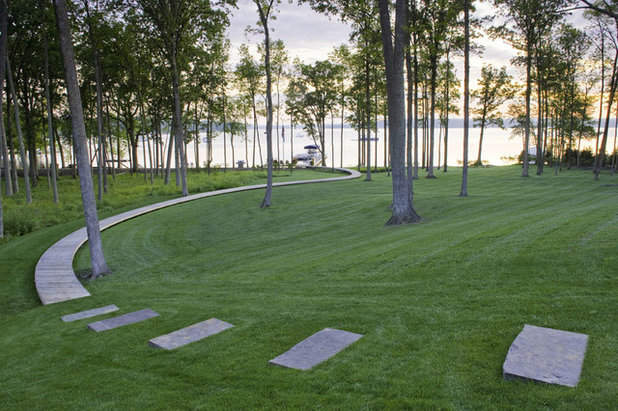
Wagner Hodgson
A few stone steps move across a vast lawn and connect with a low, curved boardwalk. The walk is obviously functional, leading people to the waterfront in the distance. Yet it gives the landscape a dramatic focal point. Simply sublime.
More:Teach Your Landscape Rhythm





